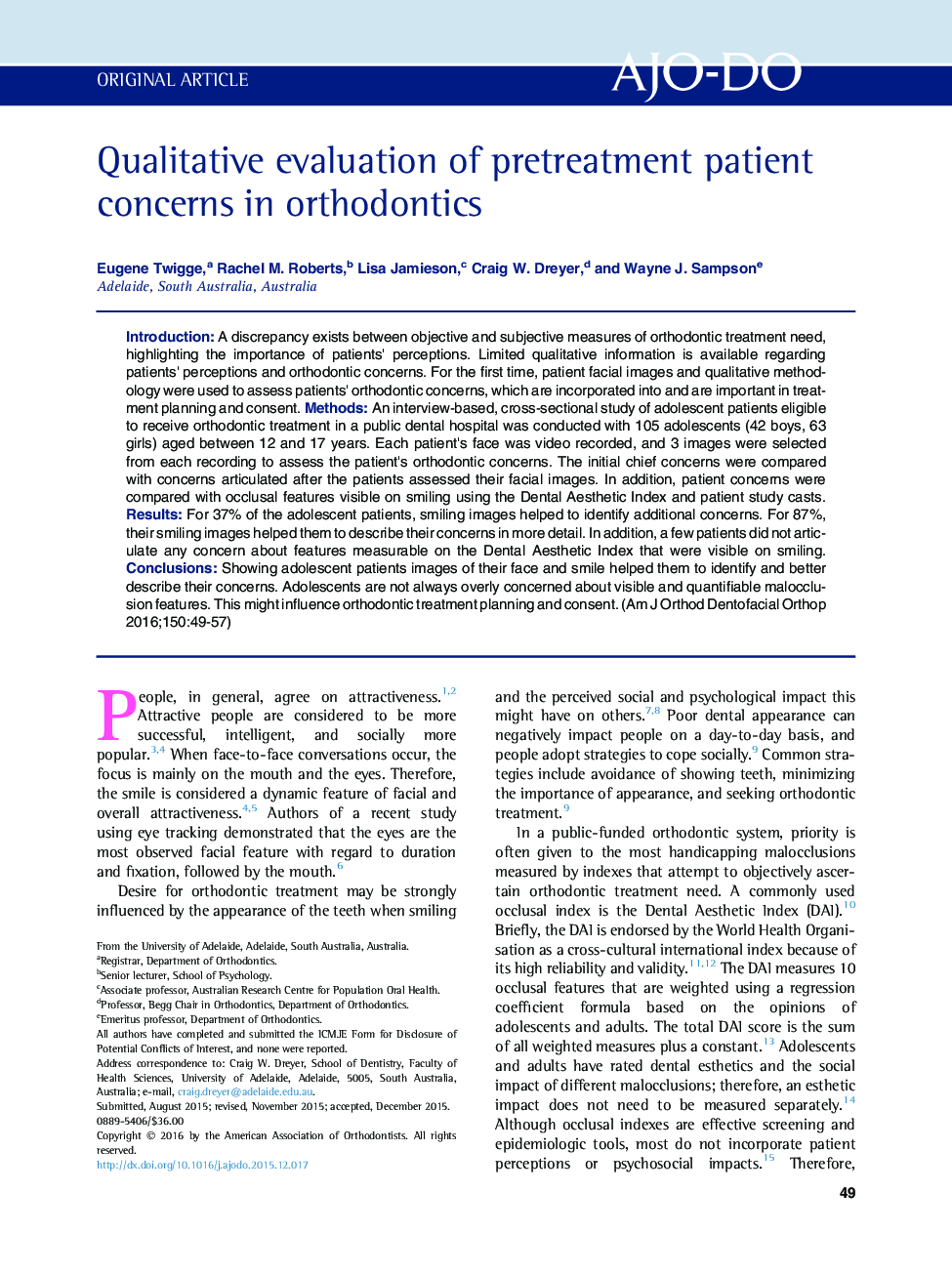| Article ID | Journal | Published Year | Pages | File Type |
|---|---|---|---|---|
| 3115371 | American Journal of Orthodontics and Dentofacial Orthopedics | 2016 | 9 Pages |
•Discrepancies between objective and subjective treatment-need measures were studied.•Smiling images helped adolescents to identify additional concerns.•Smiling images helped subjects to describe their chief concerns in more detail.•Adolescents were most concerned about the appearance of malaligned teeth.•They were also concerned about prominent front teeth, cleaning, and diastemas.
IntroductionA discrepancy exists between objective and subjective measures of orthodontic treatment need, highlighting the importance of patients' perceptions. Limited qualitative information is available regarding patients' perceptions and orthodontic concerns. For the first time, patient facial images and qualitative methodology were used to assess patients' orthodontic concerns, which are incorporated into and are important in treatment planning and consent.MethodsAn interview-based, cross-sectional study of adolescent patients eligible to receive orthodontic treatment in a public dental hospital was conducted with 105 adolescents (42 boys, 63 girls) aged between 12 and 17 years. Each patient's face was video recorded, and 3 images were selected from each recording to assess the patient's orthodontic concerns. The initial chief concerns were compared with concerns articulated after the patients assessed their facial images. In addition, patient concerns were compared with occlusal features visible on smiling using the Dental Aesthetic Index and patient study casts.ResultsFor 37% of the adolescent patients, smiling images helped to identify additional concerns. For 87%, their smiling images helped them to describe their concerns in more detail. In addition, a few patients did not articulate any concern about features measurable on the Dental Aesthetic Index that were visible on smiling.ConclusionsShowing adolescent patients images of their face and smile helped them to identify and better describe their concerns. Adolescents are not always overly concerned about visible and quantifiable malocclusion features. This might influence orthodontic treatment planning and consent.
